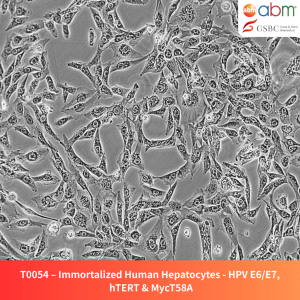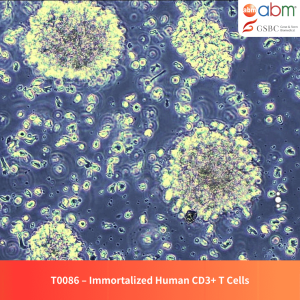Product Details
- Catalog Number: T0563
- Unit Size: 1×10^6 cells / 1.0 ml
- Species: Human (Homo sapiens)
- Tissue of Origin: Liver
- Cell Type: Immortalized macrophage-like cells
- Growth Properties: Adherent, epithelial morphology
- Immortalization Method: Lentiviral transduction with SV40, SV40T, and hTERT
- Expression Markers: CD68+, CD14+, CD11b-
- Biosafety Level: BSL-2
- Storage: Below -130°C (liquid nitrogen vapor phase)
- Shipping: Shipped on dry ice
- Format: Cryopreserved frozen cells
Overview
Immortalized Human Hepatic Kupffer Cells provide a consistent and well-characterized model for investigating liver-specific immune responses, drug toxicity, and macrophage-mediated inflammation. Engineered for extended proliferation while preserving primary macrophage characteristics, they are valuable for liver disease research and pharmaceutical applications.
Key Features and Benefits
- Stable Hepatic Macrophage Model: Ensures reproducibility in liver-related research.
- Enhanced Proliferation: Extends usability beyond primary Kupffer cells.
- Drug Screening & Toxicology: An ideal tool for hepatotoxicity studies.
- Supports 3D Culture & Co-Culture: Suitable for advanced liver tissue modeling.
- Expression of Key Markers: Maintains macrophage-specific markers (CD68+, CD14+).
Culture & Handling Guidelines
Recommended Culture Conditions
- Coating: Use PriCoat™ T25 Flasks (G299) or Applied Cell Extracellular Matrix (G422) for optimal adhesion.
- Growth Medium: PriGrow IV (TM004) supplemented with:
- 10% Fetal Bovine Serum (FBS)
- 1% Penicillin/Streptomycin (G255)
- Incubation Conditions: 37°C, 5% CO₂ in a humidified atmosphere
- Seeding Density: 10,000 – 20,000 cells/cm²
- Doubling Time: Approximately 36 – 48 hours
Thawing Protocol
- Quickly thaw the vial in a 37°C water bath (maximum 2 minutes). Keep the vial cap above the water level to avoid contamination.
- Decontaminate the vial exterior with 70% ethanol and transfer it to a biosafety cabinet.
- Transfer cell suspension to a 15 mL sterile conical tube containing 5 mL of pre-warmed complete growth medium.
- Centrifuge at 125xg for 5-7 minutes.
- Aspirate the supernatant without disturbing the pellet. Resuspend the cell pellet in pre-warmed complete growth medium and seed into a T25 culture flask.
- Incubate under recommended conditions and monitor for recovery.
Subculture Guidelines
- Aspirate old medium and rinse with PBS.
- Add 2-3 mL of pre-warmed Gentle Dissociation Solution (TM080) and incubate at 37°C until cells detach (2-10 minutes).
- Neutralize with an equal volume of complete growth medium.
- Transfer to a sterile centrifuge tube and centrifuge at 125xg for 5 minutes.
- Aspirate the supernatant and resuspend the pellet in fresh complete growth medium.
- Seed cells into new culture vessels at the desired density and incubate under recommended conditions.
Cryopreservation Guidelines
- Cryopreservation Medium: Use Cryopreservation Medium (TM024) or complete growth medium with 10% DMSO.
- Freezing Procedure: Freeze at a controlled rate (-1°C per minute) before transferring to liquid nitrogen storage.
Related Products
- Recombinant Human GM-CSF (CSF2) (E. coli) – Z100275
- Recombinant Human TGF Beta-1 (TGFB1) – Z101555
Disclaimer
- This product is for research use only and is not intended for diagnostic, therapeutic, or human/animal consumption.
- All cell line data is based on standardized culture conditions and may vary depending on end-user protocols.
- A Material Transfer Agreement (MTA) must be completed before purchase.
- We recommend live cell shipments where feasible. For frozen cells, end-users must follow the exact recommended protocol for best viability.
- No warranties are made regarding the suitability of this product for specific applications beyond those described. All sales are final.




